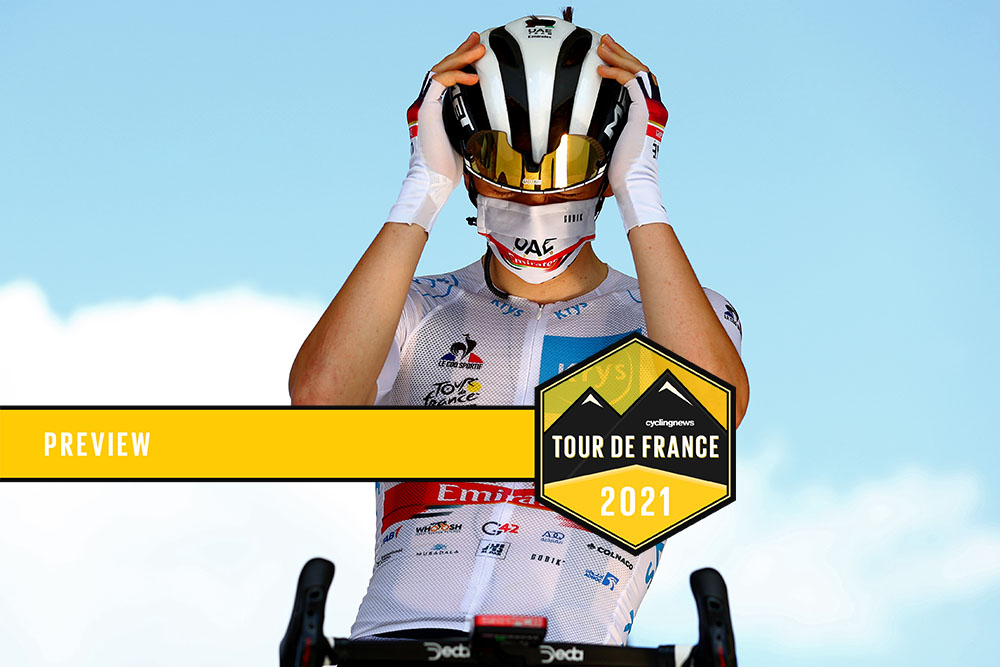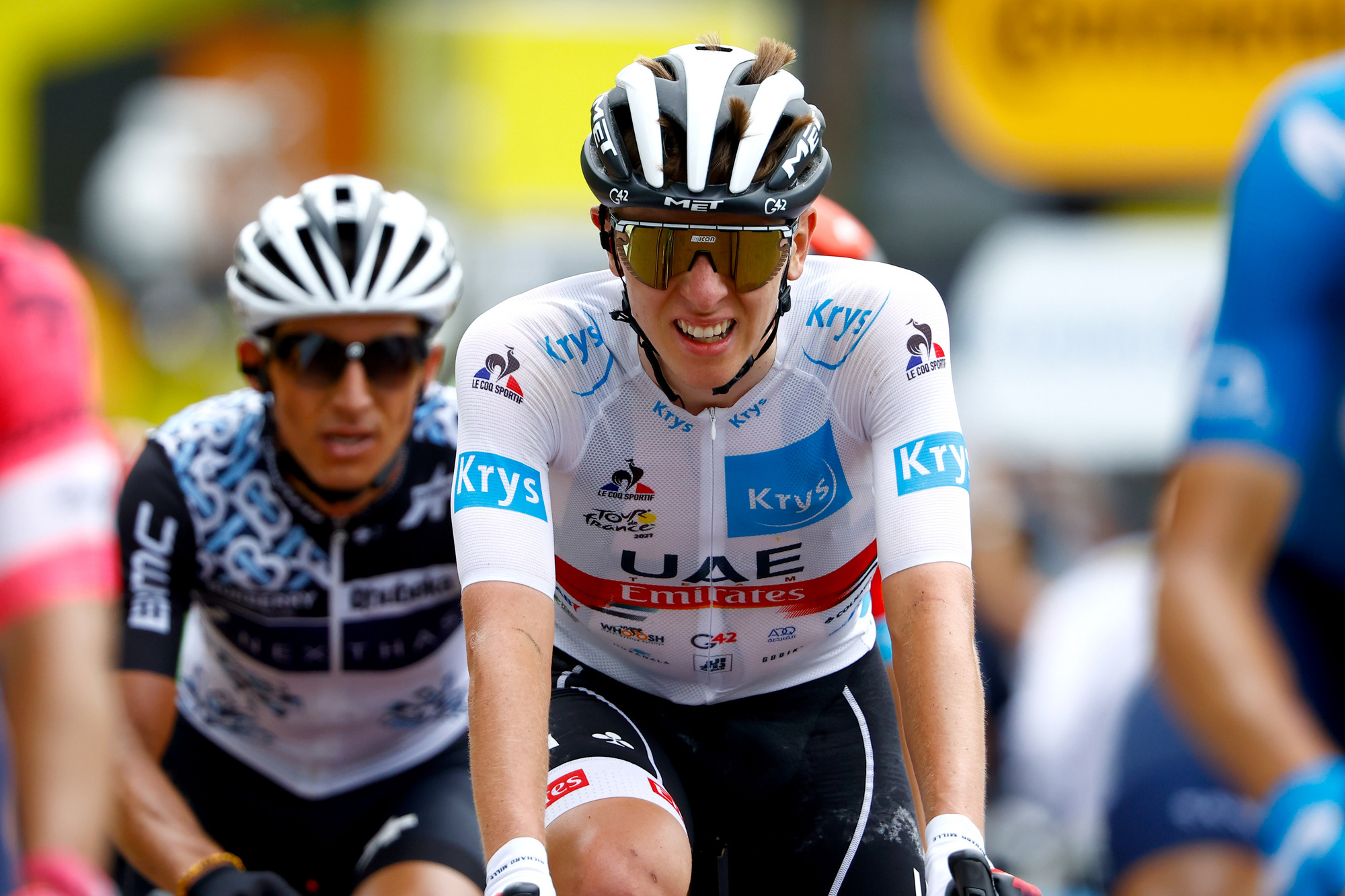Tour de France climbs into the Alps - Preview
Back-to-back days in the mountains await the Tour peloton

After seven stages of nervous racing, crashes, polemics, sprints and even the yellow jersey joining the breakaway on the road to Le Creusot, the Alps appear high on the horizon during the weekend with two mountain stages to Le Grand Bornand and then Tignes, which should finally establish a more traditional Tour de France GC hierarchy.
Mathieu van der Poel (Alpecin-Fenix) will start stage 8 to Le Grand Bornand wearing the yellow jersey and will surely put up a fight to extend his time as the race leader to a sixth day, but doubts remain over if he can do it. The Dutchman has near superhuman cycling talents but the mountains will surely be his kryptonite and see him passed by an eternal rival, and better climber, Wout van Aert (Jumbo-Visma).
If both explode after their efforts of the first week, then Tadej Pogačar (UAE Team Emirates) is waiting in the wings after emerging from the hectic first week to be the best-placed GC rider, and the favourite to win a second consecutive Tour de France.
Van Aert needs to distance Van der Poel by just 30 seconds to take yellow, but after his efforts of stage 7 he will need superb recovery to be able to climb well in the Alps and stop Pogačar from leapfrogging him and snatching the yellow jersey.
Pogačar is a significant 3:13 down on Van Aert but appears on form and poised for race leadership. His rivals are not yet beaten and UAE Team Emirates are not yet a super team, but his most dangerous rivals are falling by the wayside day after day.
Primož Roglič (Jumbo-Visma) suffered from his crash injuries and lost four minutes on Friday, taking him out of contention and possibly out of the race. Geraint Thomas (Ineos Grenadiers) is also suffering and on the defensive after he crashed and dislocated his shoulder. He is 1:46 down on Pogačar but could lose more time in the high mountains due to the pain of his battered body.
Richard Carapaz appears to be Ineos Grenadiers’ best hope of victory even if he is the worst time triallist of the four pre-race leaders. His old enemy Movistar helped pull back his late attack on Friday and may do the same in the Alps as the Spanish team rides for Enric Mas. Carapaz is 1:36 down on Pogačar after a poor time trial but seems fresh and is set to be aggressive in the Alps.
Get The Leadout Newsletter
The latest race content, interviews, features, reviews and expert buying guides, direct to your inbox!
The rest of the top 10 and the list of outside contenders is still in flux and wide open to whoever can climb well in the Alps.
Can Julian Alaphilippe (Deceuninck-QuickStep) keep French hopes alive and fly in the mountains as he first did in 2019? Probably not. He was climbing well at the Tour de Suisse but seems to be lacking his wings so far on home turf.
Jonas Vingegaard will be Jumbo-Visma’s best hope for the final GC in Paris now that Roglič has lost time. He proved in Laval that he can time trial but is racing into the unknown on his Tour de France debut.
Rigoberto Uran (EF Education-Nippo) has been flying below the radar and avoiding the crashes so far but nobody has forgotten his impressive results at the Tour de Suisse. He is closer to Pogačar than Thomas and other rivals, making him one to watch.
Nibali is not expected to survive in the Alps as he focuses on preparing for the Tokyo Olympic Games but Wilco Kelderman seems to be consistent and always present after his switch to Bora-Hansgrohe. Mas has a great opportunity to shine, while David Gaudu (Groupama-FDJ) could bounce back, win a mountain stage and perhaps return to the top ten overall.
All the GC riders will be tested during the next two stages in the Alps with long, high climbs, a descent to the finish in Le Grand Bornand, and the risk of thundershowers on Saturday, then the mountain finish up to Tignes on Sunday after the Col du Pre and then the Cornet de Roseland.

Taking the race up another level
Both stages are relatively short, Saturday at 151 kilometres and Sunday at 145 kilometres, but will surely shake up the race. We have enjoyed a week of intense action and drama but the Alps will take the Tour to another level.
Stage 8 starts in Oyonnax with an uncategorised climb offering the perfect launchpad for breakaway attacks. The big climbs come in the final third of the stage after a ride from the Jura south into Haute-Savoie.
The Alps raise their heads with the Cote de Mont-Saxonnex. It is far more than a simple cote and is a category 1 climb that lasts 5.7km at 8.3 per cent. After a week in the big ring, some may find the transition to the little ring a little uncomfortable.
All the climbs of the stage are unusually over eight per cent, perhaps suiting the featherweight climbers and stage hunters like Nairo Quintana (Arkèa-Samsic), Gaudu, Miguel Angel Lopez (Movistar), and Sergio Higuita (EF Education-Nippo).
The Col de Romme and Col de la Colombière combination featured in the 2009 and 2018 Tour. The Romme kicks up viciously from the valley floor on a spectacular road hacked out of the cliff face. It is 8.8km long and climbs at 8.9 per cent average, with the steepest section at the start.
If Roglič and Thomas lose contact here their losses could be massive.
The Romme-Colombière is a real double whammy, with the Col de la Colombière - 7.5km of climbing at 8.5 per cent, creating a total of 20 kilometres of climbing with only a slight interlude of recovery on a short descent.
The fast sweeping and fast 15km drop into the finish at Le Grand-Bornand will be raced at the limit as the Tour awards the best descenders as well as best climbers.

Back to Tignes for the first mountain finish
Sunday’s ninth stage from Cluses south and up to Tignes is the first time the Tour has ever finished at the historic ski resort.
The finish in 2019 was famously abandoned following a freak storm that washed out the roads on the descent from the lofty Iseran pass and saw Egan Bernal awarded the stage victory and the yellow jersey because he was away alone at the summit of the Iseran.
The Tour promised to quickly make amends and returns this year but via the Col du Pre and then the Cornet de Roseland instead of the lofty Iseran.
There are five categorised climbs on the full 144.9km menu. The second-category Côte de Domancy is the first and is renowned for providing the springboard for Bernard Hinault’s victory in the 1980 World Championships in Sallanches.
The Col des Saisies (9.4km at 6.2 per cent) follows before a long descent into Beaufort.
The Hors Category Col du Pré comes next and earns its status due to a hard 12.6km at 7.7 per cent. From the summit, the road descends to the Roselend reservoir and crosses the dam at the bottom end, before climbing the Cormet de Roselend, which is not far short of 2,000 metres high. Another long descent leads down into Bourg-Saint-Maurice and the start of the long and gradual climb up the Tarentaise valley towards Tignes.
It’s a steady 21km at 5.6 per cent on wide roads, so teammates could be vital here if there are attacks to drive home or to chase down.
The stage does not officially count as a summit finish because the final two kilometres to the line are flat, but it is the first mountain finish of this year's Tour and the high point of the Alps before the first rest day on Monday. By the time the riders enjoy their day off, the 2021 Tour de France will surely look far different than it does now.

Stephen is one of the most experienced member of the Cyclingnews team, having reported on professional cycling since 1994. He has been Head of News at Cyclingnews since 2022, before which he held the position of European editor since 2012 and previously worked for Reuters, Shift Active Media, and CyclingWeekly, among other publications.